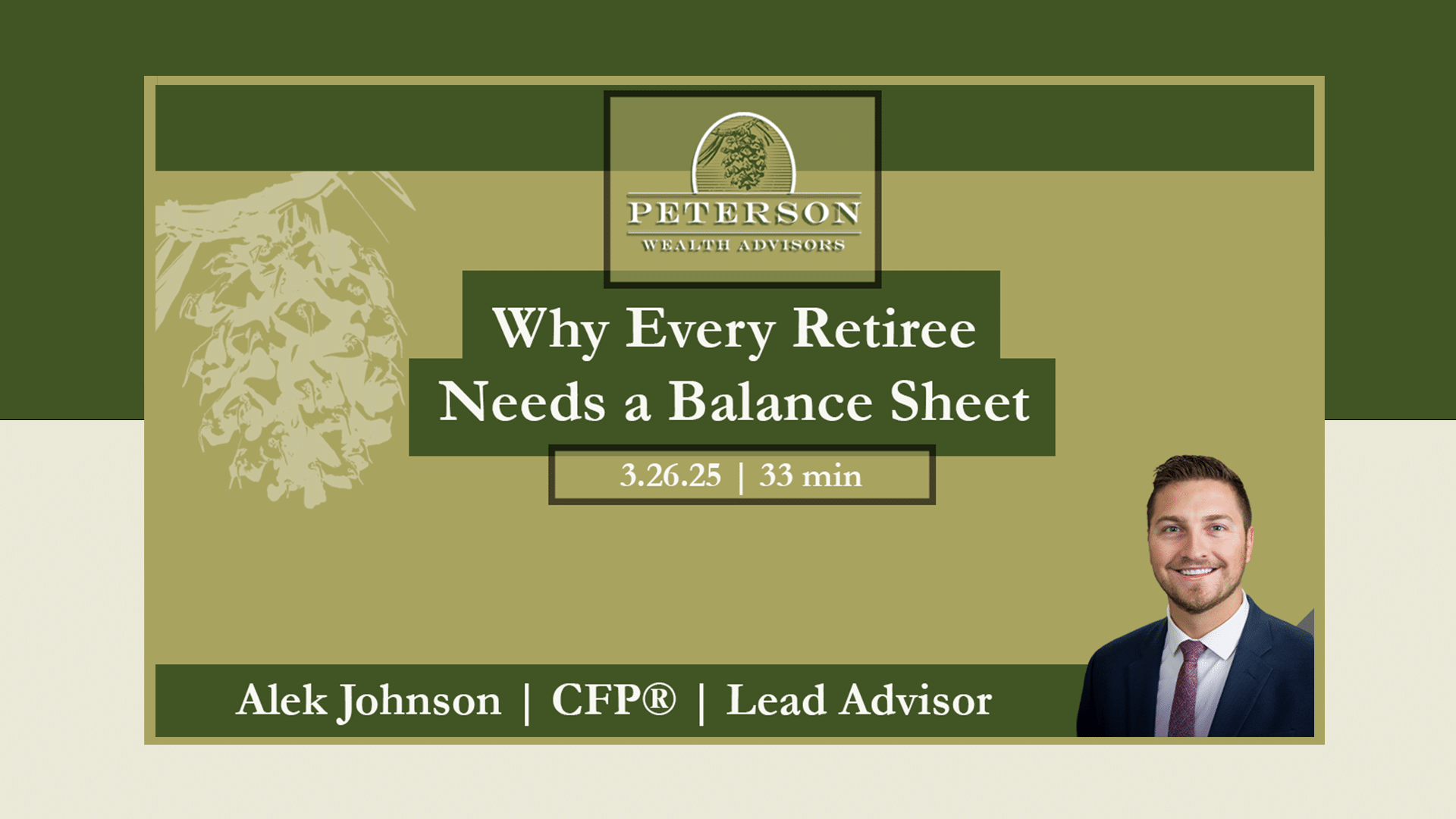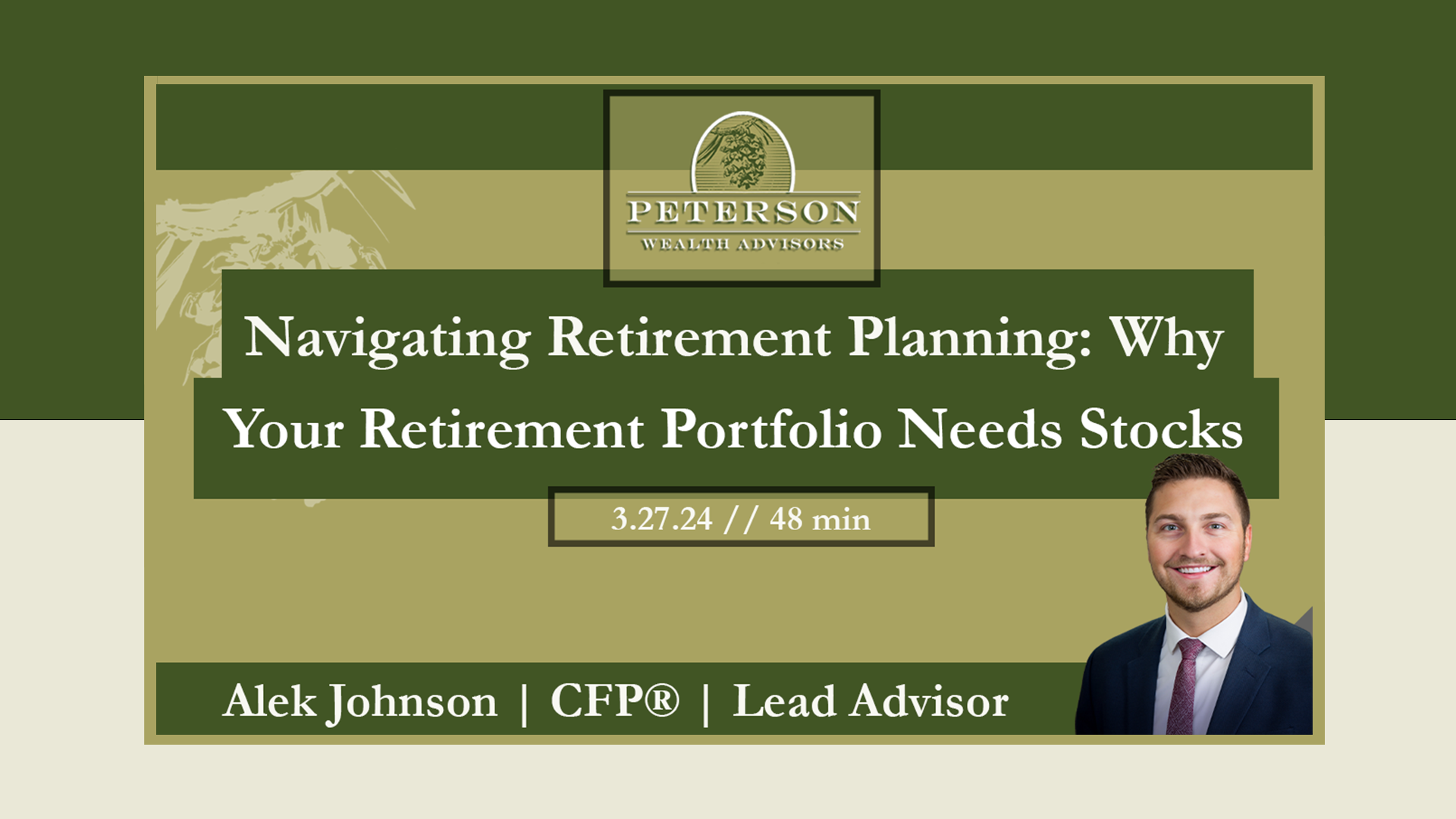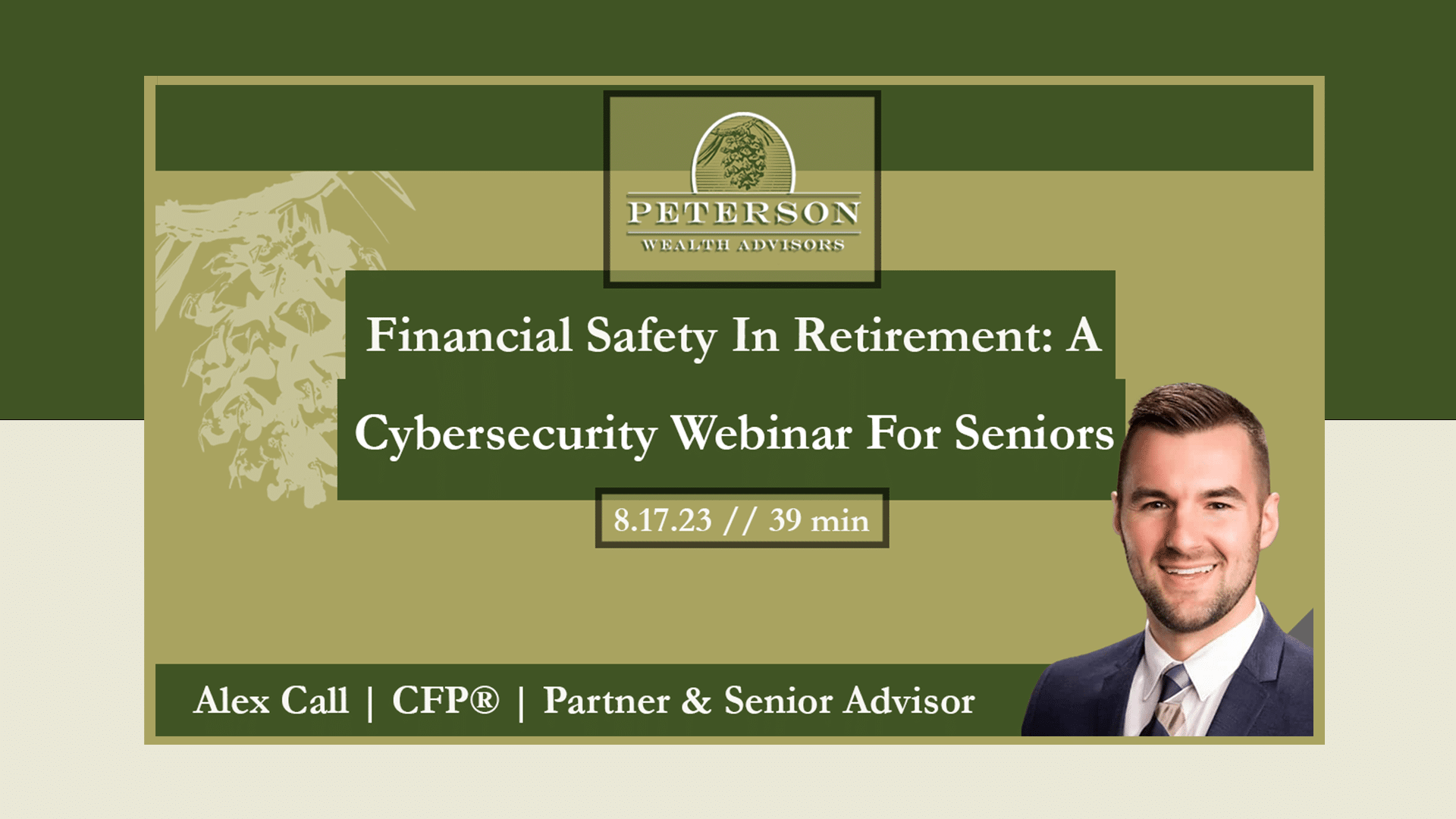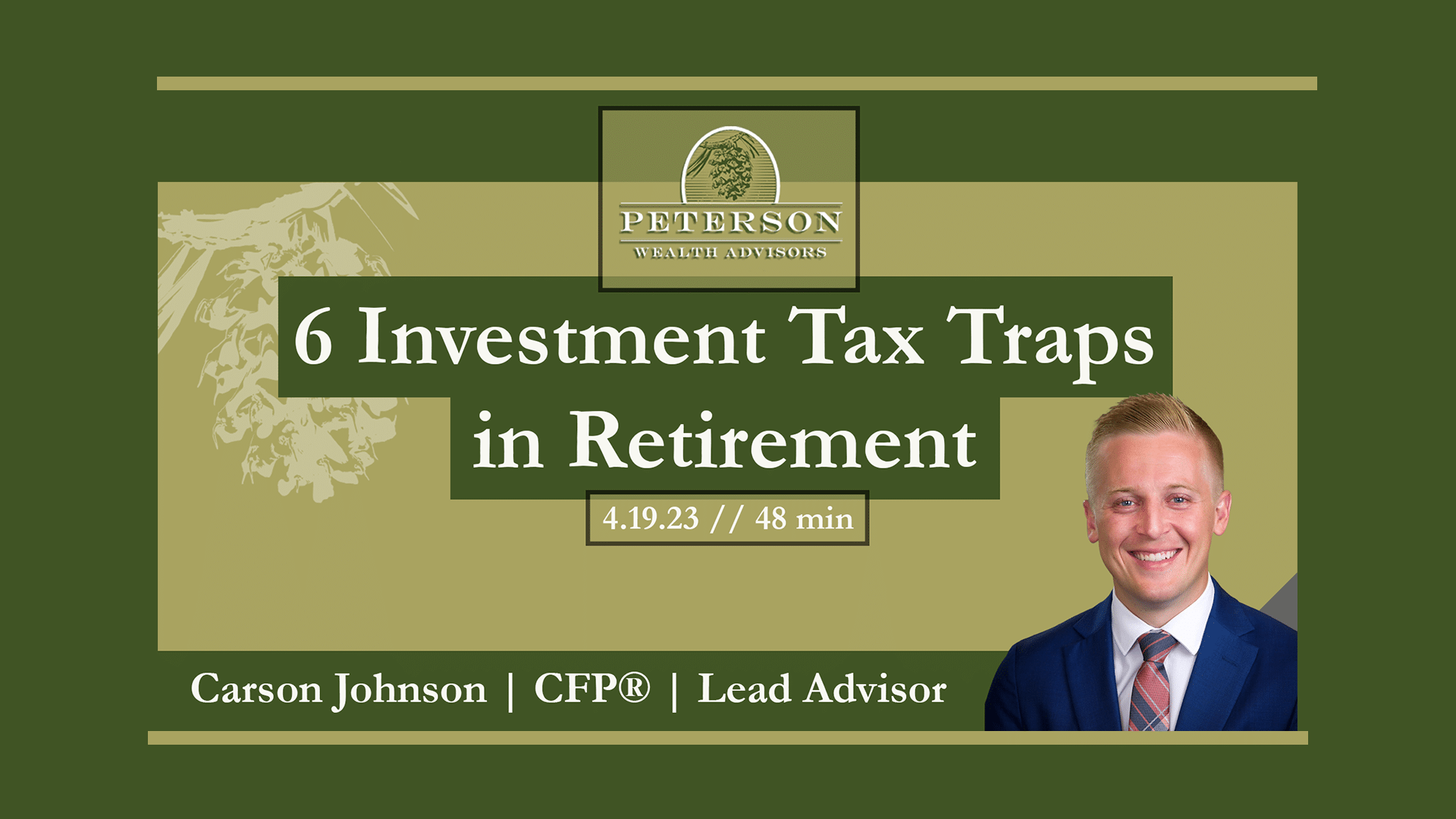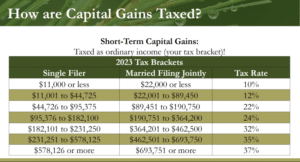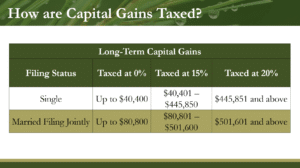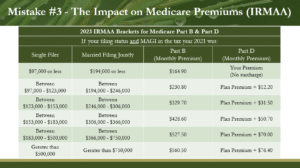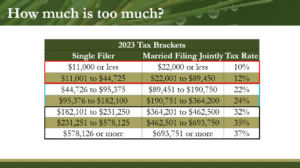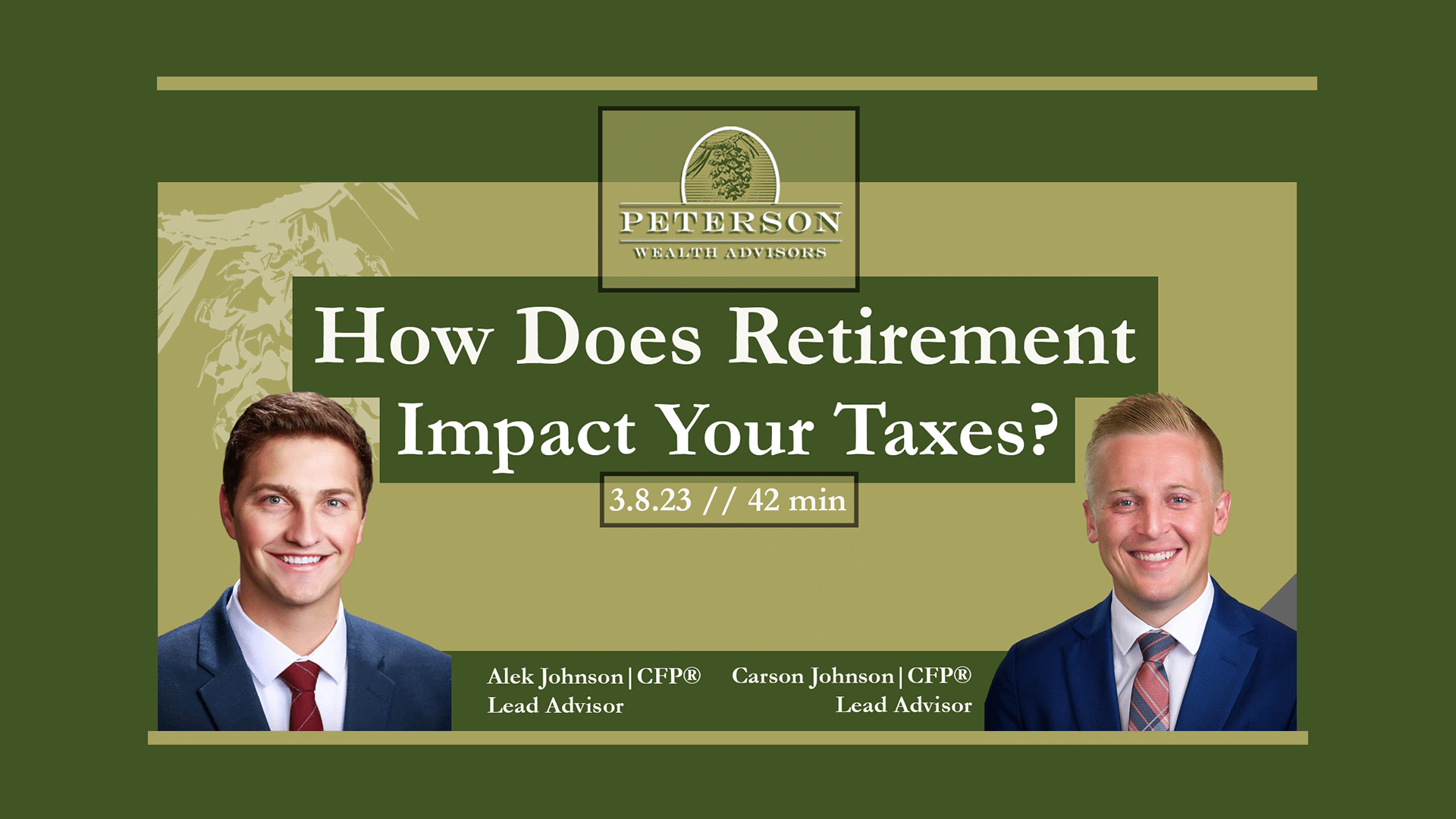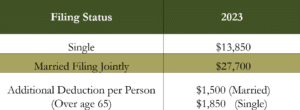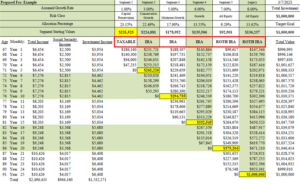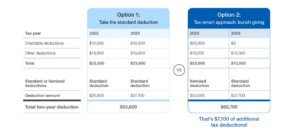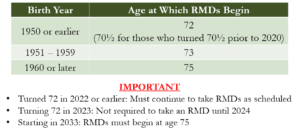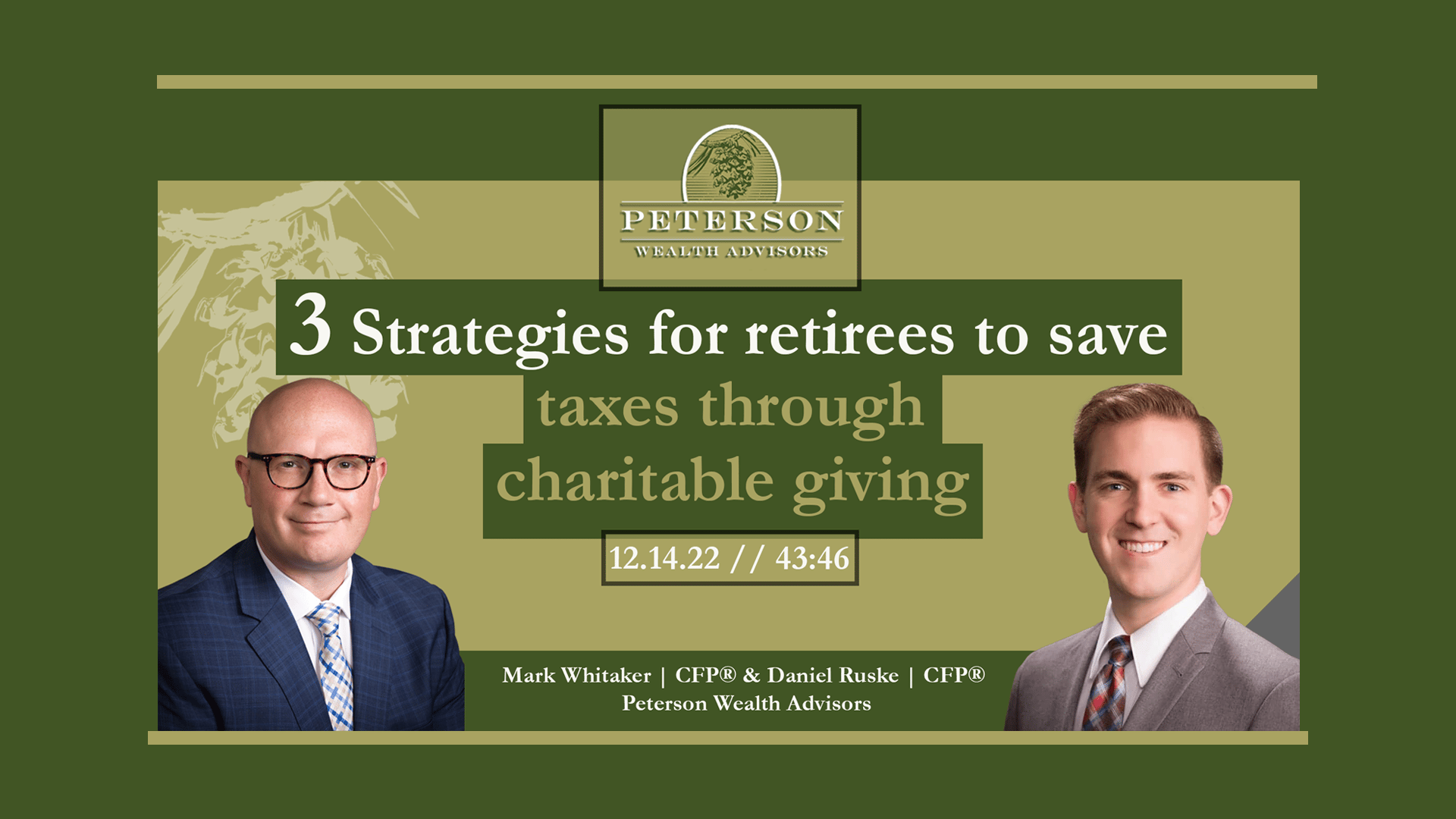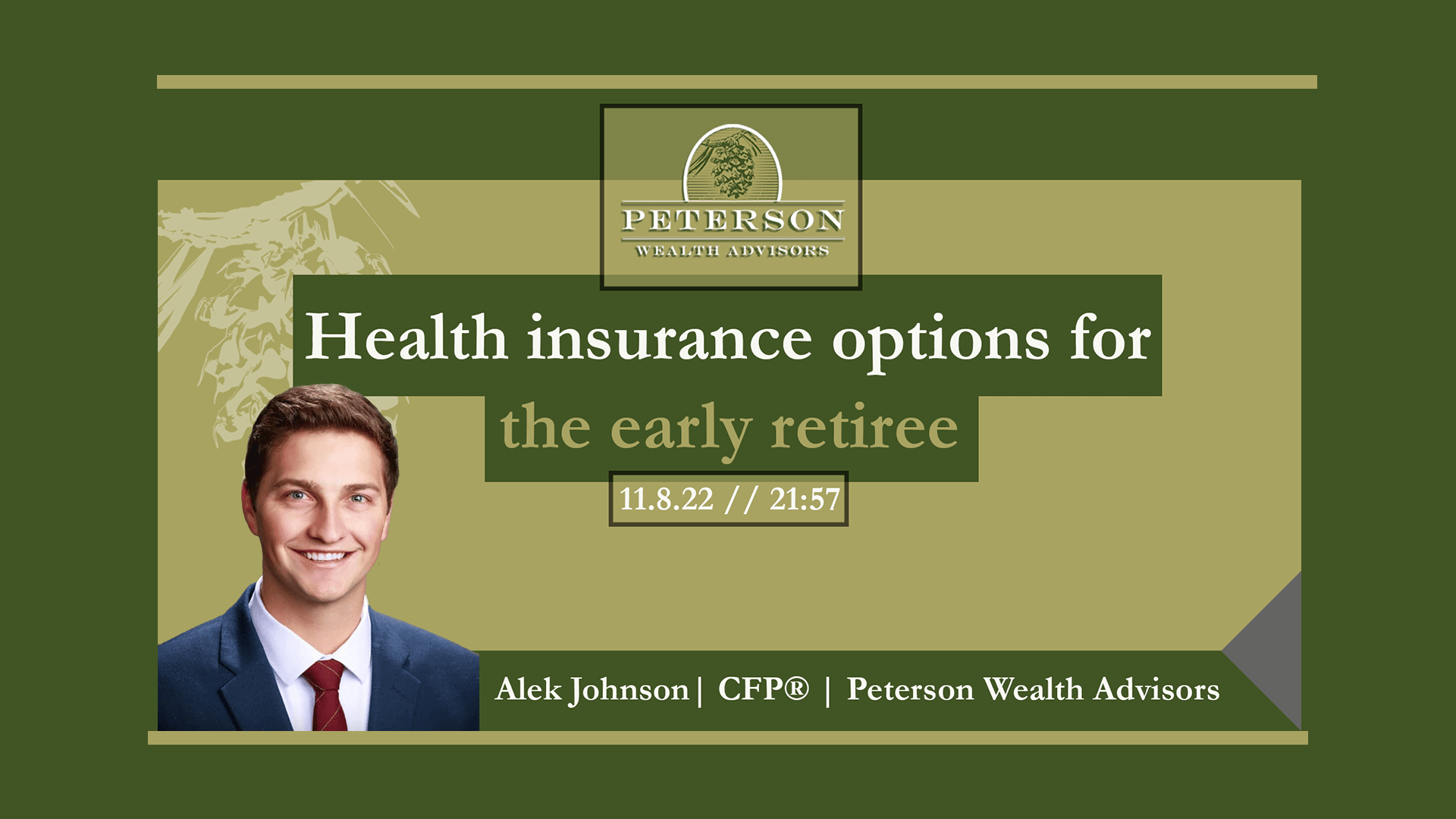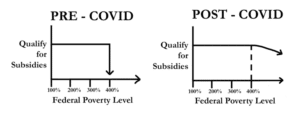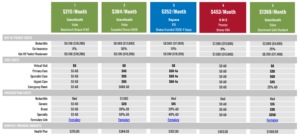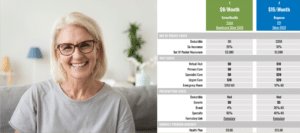Why Every Retiree Needs a Balance Sheet – (0:00)
Alek Johnson: Welcome, everyone. We’re just going to give everyone a minute or two to jump in here. I can see our participants are climbing steadily right now, so we’re just waiting a minute.
This is my favorite time of the year. I’m a big fan of March Madness, so I’m not going to talk too much about how my own team did. Utah State had more of an abysmal performance than I would’ve liked. But for a lot of you jumping on here, I’m sure there are a lot of Cougar fans. BYU is in a good spot right now—hopefully, they can get it done.
I know that I have Jeff Sevy on here with me. I know he’s not rooting for them at all.
Jeff Sevy: Not true.
Alek Johnson: Okay, I think we’re in a pretty good spot, so we’ll go ahead and dive in. There we go—“Go Cougs” is already coming through in the chat.
I’m going to go ahead and share my screen here, and we can get going.
First and foremost, I just want to say thank you very much for taking the time to jump on this webinar with us. As a financial advisor, I love working with couples and individuals one-on-one, getting to know my clients in a more personal way. But I also really love this webinar setting—just the group setting—being able to talk to and present to a large number of people at once.
So thank you for tuning in when I’m sure you have plenty of other things you could be doing at lunch right now.
For those who don’t know me, my name is Alek Johnson. I am a Certified Financial Planner™, one of the lead advisors here at Peterson Wealth.
Before we dive in today, just sticking to the status quo here, we have a couple of quick housekeeping items.
First, just to give you a gauge of timing—this should be a quicker webinar today. I think around 20 to 25 minutes is where we’ll settle in, so a little bit shorter. But hopefully, we’ll still give you some really good information to take with you today.
If you have any questions at all during the presentation, my colleague Jeff Sevy is online with us. He will be helping answer through the Q&A feature located toward the bottom of your screen. Feel free to use that to submit any questions.
I also like to take some time at the end of each of my webinars—three to five minutes or so—to go through any questions that apply to the group. I’m happy to chat and go through those with you.
If you have more of an individualized question, please feel free to either reach out to your advisor if you’re a client with us here at Peterson Wealth, or if you’re not a client, please feel free to just email us or schedule a free consultation. We’re happy to help you in that manner as well.
Last but not least, as always, at the end of the webinar there will be a survey sent out to give me and our team some feedback on future topics. Please, please utilize that—it’s always so helpful. You’ve already given us so much good feedback that we’re trying to incorporate into our future webinars. The more you share, the better for us. So please take the time to fill that out for us today.
Just a quick disclaimer: nothing in this webinar should be taken as investment, tax, or legal advice. It should be used for general purposes only. Obviously, I don’t know what each of your individual situations looks like—that’s why we encourage you to reach out if you have specific questions. But hopefully, you can glean some good value out of today’s topic.
Why Does a Balance Sheet Matter? – (4:03)
As you know, today we are going to be talking about balance sheets. Why are we doing that? Why is a balance sheet important to have?
My background is in accounting, so if you’re like me, sometimes when you hear the term “balance sheet,” you immediately jump to corporate finance. In my undergrad, that’s all I was doing—looking at balance sheets.
Investors use a company’s balance sheet to understand its overall financial health, liquidity, profitability, and a bunch of other aspects to decide if they want to invest in it.
At first glance, it doesn’t really seem like something the average person needs to have. But in reality, a personal balance sheet is one of the most powerful financial tools a retiree can have.
It’s much more than just a list of what you own and what you owe. It’s a financial snapshot at any given point in time that helps you make smarter decisions, reduce your stress, and uncover potential opportunities.
In my opinion, having a balance sheet can really be the difference between kind of drifting through retirement—or confidently being able to navigate it.
To help today’s webinar stick a little better—this is going to be a little cheesy—but I want to take you back to when I was in college at Utah State.
For about a nine or ten-month stint, I worked as a jewelry salesman up in Logan, Utah, at a company called S.E. Needham Jewelers. The picture you see here is with another sales professional we had invited to come in. He gave us some tricks of the trade.
Anyway, I’m happy to report that as young and goofy as I was, I was able to help a lot of happy couples get engaged. It was a good time—but really, that’s not the point of me walking down memory lane with you.
When I was there, we would always take the time to educate couples—or individuals—on what we called the Four Cs of diamonds.
You’re probably familiar with this yourself, right? The four Cs of diamonds: cut, color, clarity, and carat.
We’d pull out the different diamonds, let them look under the magnifier, and talk about the differences between each diamond. The four Cs always seemed to stick with people. When they’d come back, they’d say, “Okay, I thought about it more. I want a better color,” or “I want better clarity,” or “a bigger carat size.”
So today, to help this webinar stick, I’m going to give you what I’ve termed the Three Cs of the Balance Sheet.
The Three Cs are why having a balance sheet should matter to you:
- Control
Your balance sheet will help you stay in control of your finances. Most retirees don’t have all their assets in one place. They might have an IRA at Fidelity, a Roth IRA at Schwab, a 401(k) with their previous employer, their home, maybe a second home, and various checking and savings accounts at different banks. Everything ends up scattered.
Now, individually, each of those accounts might seem manageable. But collectively, it can be a lot—especially without a centralized document that shows all your assets and liabilities in one place.
Without that, it’s easy to lose track. You can make uninformed decisions—or assume everything is fine until it isn’t. Control is number one.
- Clarity
A personal balance sheet, in my opinion, forces clarity. It gathers everything into one place and says, “Here’s where I stand.” That clarity is a powerful tool and often reveals things you wouldn’t have seen otherwise.
It also allows you to have better conversations—with your spouse, your financial advisor, your children, or other professionals. When everything is visible, clear, and organized, decision-making becomes a lot more straightforward and collaborative—rather than overwhelming.
- Confidence
Many retirees don’t actually know how wealthy they are without a balance sheet. A well-structured balance sheet can offer a comforting realization of, “Hey, we’re okay,” when you see that bottom line. On the flip side, it can also be a wake-up call: “Okay, we need to make some adjustments to get to where we want to go.”
Overall, a balance sheet helps you gain confidence—either in where you stand now or in creating a plan to get to where you want to be down the road.
Breaking Down Your Balance Sheet – (9:00)
So those are the Three Cs. Keep that in mind—that’s going to be the main focus of this webinar.
In a few minutes, I want to talk about the benefits of having an updated balance sheet, so you can see what control, clarity, and confidence you can gain from having that document in place.
But first, I want to briefly touch on how you set up and create your balance sheet so we’re all on the same page. Let’s go ahead and break this down.
A personal balance sheet gives you a clear, organized snapshot at a specific point in time. It’s made up of two primary sections:
- Assets – what you own.
These are items with value that you could sell, use to produce income, or convert to cash. This is the good stuff—what everyone wants to have. - Liabilities – what you owe.
These are your obligations, debts, or future payments. Together, your assets and liabilities determine your net worth.
Liabilities are not inherently bad, even though they reduce your net worth. We’ll talk more about that in a bit.
Once you’ve listed everything, subtract your total liabilities from your total assets. That result is your net worth.
When you create your balance sheet, your assets should be listed in order of liquidity—from the most accessible (cash) to the least liquid (real estate or personal property like collectibles).
A note on personal property: this section is optional. My general rule of thumb—if it could realistically be sold for over $5,000, consider putting it on. Otherwise, it may just clutter the statement. You don’t need to list your couch or TV. But if you have art or other collectibles worth more than $5,000, definitely consider including them.
A few other tips when listing your assets:
- Include the account name
- The institution where the account is held
- The account type (IRA, Roth IRA, joint, trust, etc.)
- And the titling—whether it’s held individually, jointly, or in a trust
Also, make sure to use realistic and current market values—not what you think it’s worth or what you paid for it.
Your liabilities should be listed from short-term to long-term. I also suggest including the creditor name, the interest rate on each liability, and the monthly payments you are making. If you know the payoff date for any liabilities, I would include that as well when you’re creating or updating your balance sheet.
Once both sections are complete, you’re simply going to take your total liabilities, subtract them from your total assets, and that will give you your net worth.
This is your financial scoreboard, so to speak—tying it back to March Madness, right? The scoreboard of your net worth shows what you’ve accumulated and gives you a good baseline you can track over time as you progress through retirement.
Pro Tips for Creating or Updating Your Balance Sheet
Here are some quick, friendly pro tips when you’re updating or creating your balance sheet. A few of these we’ve already touched on, so I won’t spend too much time there.
- Update it at least annually.
Set a date—whether it’s the beginning of the year, after you file your taxes, or even your birthday (although that might make for a sad birthday!). The point is: your assets grow, your debts shrink, and things change all the time. So get in the habit of updating it at least once a year.
- Be honest and accurate.
Use realistic market values—not what you hope it’s worth or what you paid for it. This is especially true for things like real estate or collectibles. Don’t inflate the value of your assets, even though we tend to have a bias as owners to think they’re worth more. But also don’t deflate them either—get a market value that’s realistic and current.
- Don’t include income or expenses.
This is a common point of confusion. Your balance sheet is not your income statement. Both are great tools, but they are different. So when creating your balance sheet, don’t list out your monthly spending or income. This is strictly a snapshot of your assets and liabilities.
- Label ownership clearly.
Titling really matters—especially for estate and tax planning implications. Be sure to label whether the asset is held individually, jointly with a spouse, in a trust, etc. And while you’re at it, make sure your beneficiaries are up to date, and that you know who the beneficiary is on each of your accounts.
Benefits of Having an Updated Balance Sheet – (14:50)
Pretty straightforward, right? I assume most of you have created a balance sheet at some point in your life. So for many of you, this is probably more of a refresher than anything new.
Now let’s talk about the benefits of having an updated balance sheet.
I’ve had many great conversations and made strong planning decisions for clients simply because we first reviewed their balance sheet. Having this one document updated and in place can make a big difference. Here are a few key things we’ve discovered from it.
It drives smarter decisions.
First, it brings clarity to your investment decisions.
For example, when reviewing retirees’ balance sheets, I’ve often found they have an improper asset allocation. You might be investing appropriately inside your 401(k) or IRA, and think you’re allocated well. But if you’re also holding a large sum of cash on the side—just because you like a bigger emergency fund—that cash can impact your overall It might make you more conservative than you need or intended to be.
Another common situation: you may be well-invested overall, but not strategically invested across your different accounts.
Let’s say you want to be 60% stocks and 40% bonds in your overall portfolio. Many retirees split that 60/40 ratio evenly across their IRA and Roth IRA. But a potentially smarter strategy would be to invest the Roth IRA more aggressively—to capture market growth 100% tax-free—and keep the IRA more conservative.
So you still maintain the 60/40 balance overall, but now you’re directing more of the growth to a tax-free account, which can significantly benefit your long-term wealth.
It improves cash management.
Many retirees unknowingly hold excess cash spread across multiple bank accounts—checking, savings, etc. These funds often sit idle and earn little to no interest, which creates a huge opportunity cost.
With a balance sheet, it’s easier to identify surplus cash and redirect it to better options—like a high-yield savings account, CDs, a money market fund, or even short-term bond funds.
I’ve seen retirees with hundreds of thousands of dollars in cash earning 001% interest, while high-yield savings accounts were offering 4–5% during that same time. Some banks simply don’t reward savers, and unless you’re paying attention, that lost interest can add up quickly.
Cash management is a huge benefit we find with the balance sheet.
Confidence in Your Debt Strategy
It also helps us have better confidence in our debt strategy.
Often, retirees—and really just people in general—assume that all debt is bad, but that’s not always true. Some debt, like a low-interest mortgage, might be strategically kept as part of your financial plan.
In fact, I’ve recommended holding onto a mortgage instead of paying it off, several times. A balance sheet brings that conversation to the forefront. It allows you to ask questions like:
- Is this debt manageable?
- Could paying it off improve our cash flow or peace of mind?
- What asset would we use to pay off that debt?
- Can we incorporate the debt into our retirement plan?
All of these decisions become clearer when you have your balance sheet in place.
Identify Red Flags
Another great benefit of a balance sheet is that it helps you identify red flags.
One of the biggest advantages is that it brings things to the surface—things that may have been hiding in plain sight for years.
For example, you might come across an old 401(k) from a job 20 or 25 years ago that you forgot about. You wouldn’t believe how many clients have come in—some of whom I’ve worked with for years—and said:
“Alek, I got this thing in the mail about my 401(k) from a firm I worked at years ago. Do you know if there’s any money in there?”
And I’m thinking, I didn’t even know that account existed! It’s not necessarily a huge problem, but it can be a missed opportunity if that money isn’t invested properly. Having a balance sheet helps us track that kind of thing.
Another common red flag is mismatched account titling. For example, you may meet with an attorney to create a solid estate plan—establishing a trust and a will—but still have a joint account that should be titled in your trust. Or you might have a brokerage account with no named beneficiaries.
These things can create big headaches later if they’re not cleaned up now. I promise you, your kids will thank you endlessly for doing this now, rather than having to sort it all out after you’ve passed.
And while it’s not as common, we sometimes find lingering debt issues—a credit card balance, or a home equity line of credit with a high interest rate quietly growing in the background.
Knowing what you owe is just as important as knowing what you own. That knowledge gives you the control and confidence to deal with outstanding debt. We’ve caught some really high-interest debts this way—ones clients weren’t even aware of.
Improves Tax and Estate Planning
A balance sheet isn’t just helpful right now—it’s also incredibly useful for future planning. It improves coordination with your CPA, financial advisor, estate attorney, and other professionals by giving them a full financial picture.
From a tax planning standpoint, it helps uncover opportunities. For example:
- Are you sitting on appreciated stock in a taxable account that could be donated instead of triggering capital gains?
- Do you have a large portion of your savings in pre-tax retirement accounts that could lead to large Required Minimum Distributions (RMDs) down the road?
Having the full picture allows us to evaluate if Roth conversions might be a good strategy to reduce future tax headaches.
These kinds of questions can’t be answered without knowing what’s where and how much is in each account. A balance sheet sets the stage for thoughtful tax planning, rather than reactive tax filing.
When it comes to estate planning, the same applies. Account titling, beneficiary designations, and estate documents all depend on knowing what assets exist and how they’re structured.
With a good balance sheet, we can discuss:
- What will pass through the will vs. directly to beneficiaries?
- Are all of your assets properly titled in the trust?
- Can accounts be consolidated to make things easier on your heirs?
One recent example from another advisor in our office: a client had their mother’s house titled in their own name, which meant they were not going to receive a step-up in basis when their mom passed away. That advisor was able to help retitle the property appropriately.
These details matter, and a balance sheet helps you streamline estate settlement for your loved ones down the road.
Tracking Your Financial Plan Over Time
Perhaps the biggest benefit of a balance sheet is that it helps you track your overall financial plan over time. One of the biggest problems I see when people create a balance sheet is that they do it once, feel accomplished—”We did it! Got it done!”—and then they don’t look at it again for years.
But financial planning isn’t a one-and-done event. It evolves—and it can evolve quickly. Your assets grow. Your spending changes. Your debts get paid off. Your goals shift.
By updating your balance sheet regularly, you can see if you’re building wealth, maintaining it, or starting to spend it down. It helps answer important questions like:
- Are we on track?
- Is our net worth holding steady?
- Have our liabilities been reduced, or is interest still accumulating?
- Are we using our money the way we intended?
A balance sheet creates an ongoing conversation rather than a one-time report. That’s the biggest gap I see—people are great at creating it once, but they don’t go back to compare over time.
However, your balance sheet is one of the best indicators of whether your plan is actually working.
Summary – (25:22)
In retirement, it’s not enough to hope your finances are in good shape. You need visibility. You need structure. And you need the ability to make informed decisions as your life continues to change and progress.
A personal balance sheet provides you with just that. It’s not about spreadsheets (even though some of us—myself included—love Excel). It’s about staying in control, getting clarity on your planning decisions, and moving through retirement with confidence.
So I highly recommend making your personal balance sheet a living, breathing part of your financial life. It’s one of the best tools you can have, and I truly believe it will help you be set up for long-term success.
Alright, quick and easy—hopefully I didn’t go too long there.
Before I open it up to questions with Jeff, I just want to mention, hopefully all of you already have a copy of the book Plan on Living by our founder, Scott Peterson. If not, please feel free to request it. It’s completely free, and we’ll get it sent out to you in the next day or two.
If you’d like to share a copy with someone, email us. We can send it directly to them or to you if you’d prefer to deliver it yourself.
Lastly, thanks again for attending today. I know you probably had other things you could be doing here at noon on a Wednesday, but I appreciate you taking the time to join.
And one more plug for the survey—if you wouldn’t mind filling that out, letting us know what you thought and what topics you’d like to hear more about, we’d be grateful!
Question and Answer Session – (27:13)
Okay, Jeff, I’ll turn it over to you. Any questions that we got?
Jeff Sevy: Ya, we have one or two here that would be easy to answer.
Q: Can Peterson Wealth work as a financial planner prior to retirement—like one to two years out?
Alek Johnson: A: The short answer is yes. The longer answer, it really depends on your situation. As fiduciaries, our goal is to put your best interest first. Some people are comfortable managing things on their own up until retirement, which is a major transition from accumulation to distribution. That shift brings a lot of change, and it’s often a great time to link up with a planner. If you’re ready to offload some of the complexity, we’re happy to help.
Jeff Sevy: Q: Should I list CDs as short-term or long-term assets?
Alek Johnson: A: For the most part, list them as short-term. Even though you can get longer terms on CDs, they’re still fairly liquid. If needed, you can access them early with a small interest penalty.
Jeff Sevy: Q: Does it make sense to use investments to pay off my mortgage?
Alek Johnson: A: It depends. Sometimes yes, sometimes no—it depends on what type of accounts you’d be pulling from. If everything is in an IRA or 401(k), paying off the mortgage might trigger a big tax hit. But if you have assets in a brokerage or trust account, it might make more sense. Reach out to us—we’re happy to walk through it with you.
Jeff Sevy: Q: What goes into the decision to pay off a mortgage early or keep it?
Alek Johnson: A: A few key factors come into play, but the biggest is usually your interest rate. This one really depends on your personal situation. If you’re pulling from a 401(k) or IRA, all of that will be taxable. Depending on your tax bracket, that could mean paying 12%, 22%, or more in taxes just to eliminate a mortgage with a 3% interest rate. That’s a tough tradeoff.
Jeff Sevy: Q: How do you determine the actual value of assets?
Alek Johnson: A: For brokerage and retirement accounts, the values are straightforward—just look at your most recent statements. The market value is usually up to date.
For assets like real estate, collectibles, or art, you’ll want to get an appraisal. That small investment up front can go a long way in giving you an accurate sense of what your assets are worth—especially when doing estate planning or calculating net worth.
If you’re unsure what something is worth or whether it’s worth including, feel free to reach out to us and we can help point you in the right direction.
Jeff Sevy: Q: If I already own my home, is there any reason to take out a mortgage before retirement?
Alek Johnson: A: That’s a loaded question. For most people, I’d lean toward no. If your home is paid off, it’s typically best to keep it that way.
But there may be very specific situations where it makes sense—perhaps for liquidity, investment opportunities, or estate planning. That’s something we’d want to discuss one-on-one so we can evaluate your numbers and goals.
Thanks again to everyone who joined us. If you haven’t already, please fill out the post-webinar survey. It helps us improve these sessions and gather ideas for future topics you’d like to see.
We appreciate your time and hope you found this session helpful. Enjoy the rest of your day!
